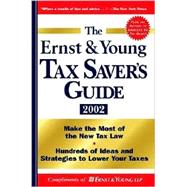
| How to Use This Book | ix | ||||
| Index to Life-Cycle Events | xi | ||||
| Changes in the Tax Law You Should Know About | xiii | ||||
| 10 Smart Tax Planning Tips | xviii | ||||
| Tax Relief for Victims of September 11 Attacks | xix | ||||
| PART I-TAX STRATEGIES FOR INDIVIDUALS | 1 | (190) | |||
|
3 | (30) | |||
|
3 | (1) | |||
|
3 | (4) | |||
|
7 | (3) | |||
|
10 | (1) | |||
|
10 | (1) | |||
|
11 | (1) | |||
|
11 | (4) | |||
|
15 | (6) | |||
|
21 | (12) | |||
|
33 | (25) | |||
|
33 | (1) | |||
|
34 | (1) | |||
|
35 | (2) | |||
|
37 | (1) | |||
|
38 | (1) | |||
|
38 | (1) | |||
|
38 | (1) | |||
|
38 | (2) | |||
|
40 | (3) | |||
|
43 | (1) | |||
|
44 | (5) | |||
|
49 | (1) | |||
|
49 | (2) | |||
|
51 | (1) | |||
|
52 | (5) | |||
|
57 | (1) | |||
|
58 | (17) | |||
|
58 | (1) | |||
|
58 | (2) | |||
|
60 | (15) | |||
|
75 | (14) | |||
|
75 | (1) | |||
|
75 | (13) | |||
|
88 | (1) | |||
|
89 | (17) | |||
|
89 | (1) | |||
|
89 | (4) | |||
|
93 | (2) | |||
|
95 | (2) | |||
|
97 | (1) | |||
|
98 | (1) | |||
|
99 | (4) | |||
|
103 | (1) | |||
|
104 | (1) | |||
|
105 | (1) | |||
|
106 | (18) | |||
|
107 | (1) | |||
|
107 | (3) | |||
|
110 | (1) | |||
|
111 | (1) | |||
|
112 | (2) | |||
|
114 | (1) | |||
|
114 | (3) | |||
|
117 | (2) | |||
|
119 | (1) | |||
|
120 | (1) | |||
|
120 | (1) | |||
|
121 | (1) | |||
|
122 | (2) | |||
|
124 | (11) | |||
|
124 | (1) | |||
|
124 | (4) | |||
|
128 | (3) | |||
|
131 | (4) | |||
|
135 | (12) | |||
|
135 | (1) | |||
|
136 | (6) | |||
|
142 | (5) | |||
|
147 | (27) | |||
|
147 | (1) | |||
|
147 | (4) | |||
|
151 | (3) | |||
|
154 | (2) | |||
|
156 | (1) | |||
|
157 | (1) | |||
|
158 | (4) | |||
|
162 | (5) | |||
|
167 | (1) | |||
|
168 | (1) | |||
|
169 | (3) | |||
|
172 | (1) | |||
|
173 | (1) | |||
|
174 | (17) | |||
|
174 | (2) | |||
|
176 | (2) | |||
|
178 | (4) | |||
|
182 | (2) | |||
|
184 | (7) | |||
| PART II--HOW TO IMPROVE YOUR FINANCIAL FUTURE | 191 | (46) | |||
|
193 | (13) | |||
|
193 | (1) | |||
|
193 | (13) | |||
|
206 | (7) | |||
|
206 | (1) | |||
|
206 | (1) | |||
|
207 | (1) | |||
|
207 | (6) | |||
|
213 | (24) | |||
|
213 | (1) | |||
|
213 | (1) | |||
|
214 | (19) | |||
|
233 | (2) | |||
|
235 | (2) | |||
| PART III--TAX STRATEGIES FOR BUSINESS | 237 | (56) | |||
|
239 | (8) | |||
|
239 | (1) | |||
|
239 | (2) | |||
|
241 | (6) | |||
|
247 | (32) | |||
|
247 | (1) | |||
|
247 | (2) | |||
|
249 | (18) | |||
|
267 | (12) | |||
|
279 | (8) | |||
|
279 | (1) | |||
|
279 | (1) | |||
|
280 | (2) | |||
|
282 | (3) | |||
|
285 | (2) | |||
|
287 | (6) | |||
|
287 | (1) | |||
|
287 | (1) | |||
|
288 | (1) | |||
|
289 | (1) | |||
|
289 | (1) | |||
|
289 | (1) | |||
|
290 | (1) | |||
|
291 | (1) | |||
|
291 | (2) | |||
| Appendices | 293 | (6) | |||
| Tax Calendar | 299 | (2) | |||
| Index | 301 |
The New copy of this book will include any supplemental materials advertised. Please check the title of the book to determine if it should include any access cards, study guides, lab manuals, CDs, etc.
The Used, Rental and eBook copies of this book are not guaranteed to include any supplemental materials. Typically, only the book itself is included. This is true even if the title states it includes any access cards, study guides, lab manuals, CDs, etc.